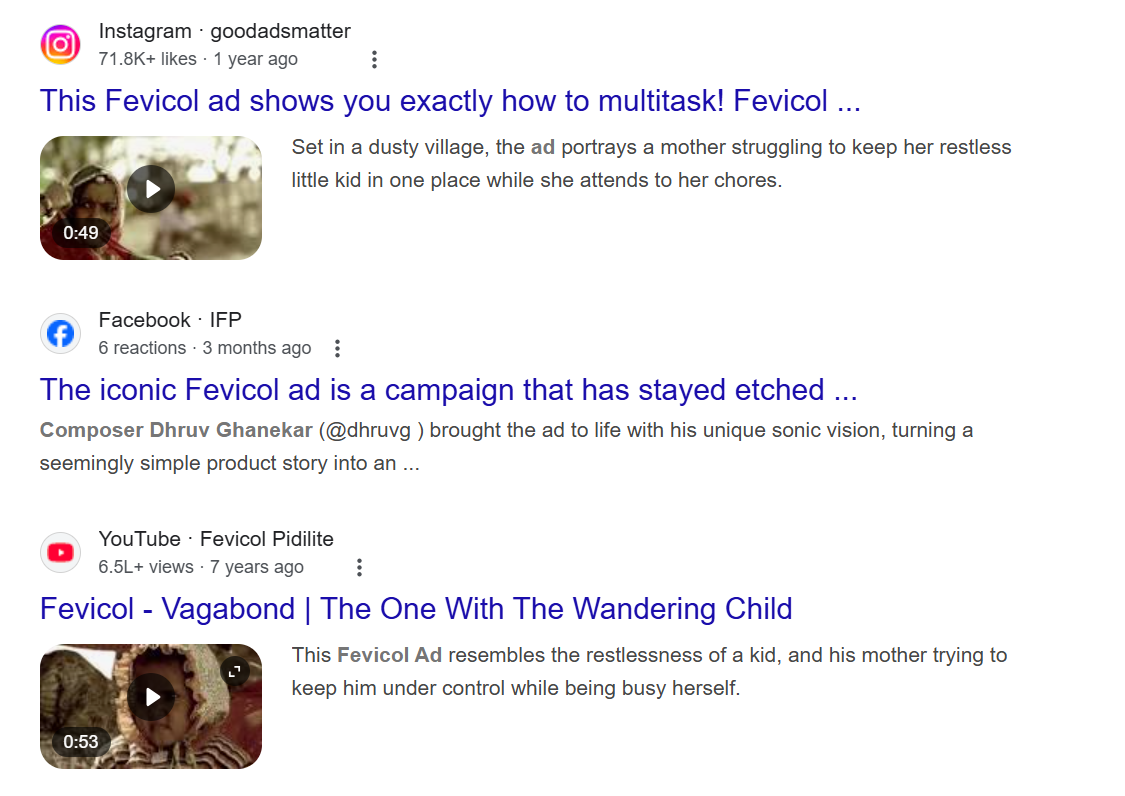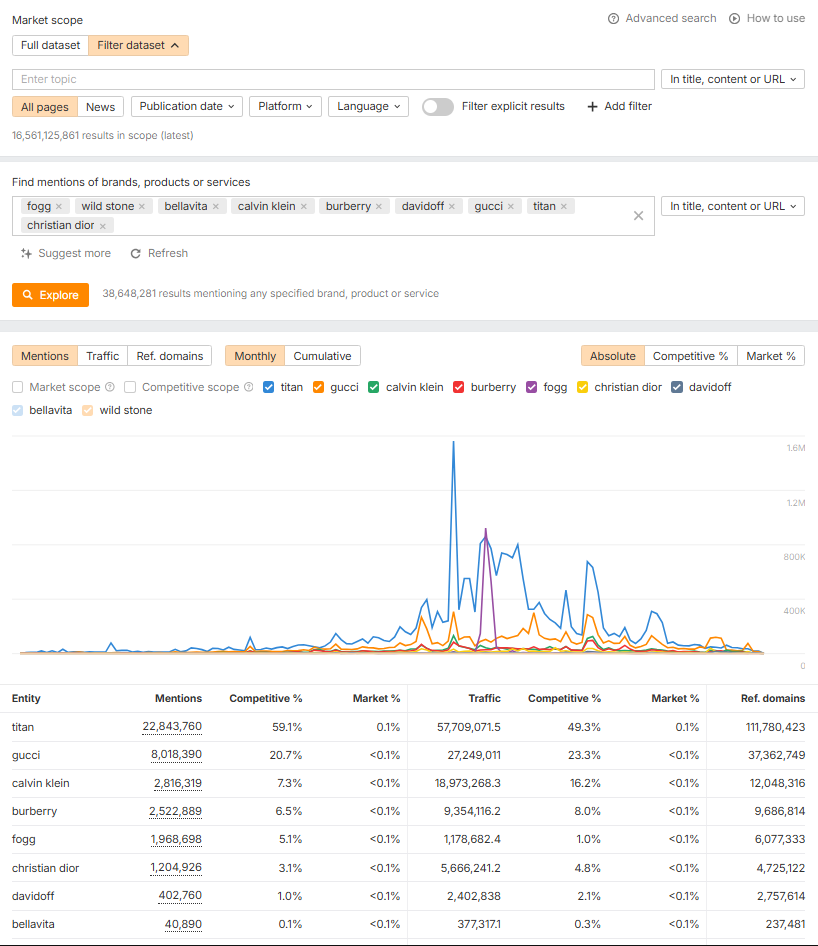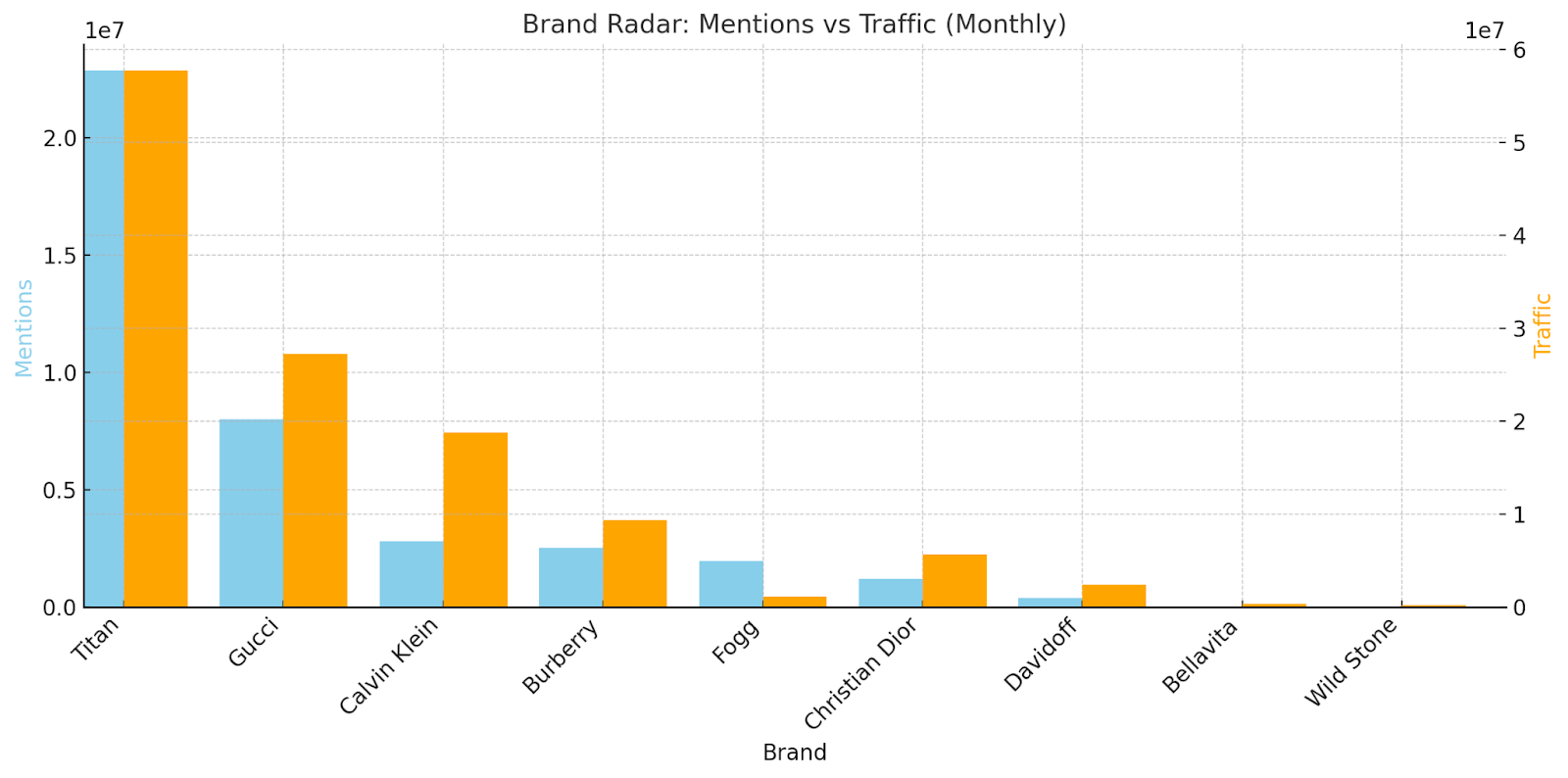Why Your Brand Voice Might Be the Most Underrated SEO Advantage?
Finding the right keywords no longer guarantees visibility. Many teams optimise pages for search engines yet publish content in a generic and uninspiring tone.
As Google has started featuring content in the AI overview and AI mode section, having a distinct voice is your fastest route to being recalled, trusted, and ranked.
In an AI-first search world, sameness gets filtered out. According to Google’s documentation, content that demonstrates experience, expertise, authoritativeness, and trustworthiness (E-E-A-T) is more likely to rank well.
Key Takeaways
- Brand voice is no longer optional; it's a ranking factor.
Search engines and LLMs like Google, Gemini, and ChatGPT treat your brand as an entity. They analyse tone, consistency, and engagement signals to determine visibility. - Google uses a site quality score tied to brand strength.
If your brand falls below a 0.4 threshold, you could be disqualified from rich snippets, regardless of keyword usage. - Keyword targeting alone won't get you noticed anymore.
A distinct, consistent voice increases dwell time, shares, and branded search. - Your voice must evolve with your audience and platform.
TikTok rewards spontaneity, LinkedIn values clarity, and Instagram leans into emotion; your voice must flex without losing identity. - Unique Brand Voice helps you stand out among your competitors.
Caselets like Nykaa and Fevicol show how SEO-driven voice drives both authority and engagement, not just visibility.
Our experience shows that a distinctive brand voice is a real lever for search visibility and conversions.
Defining Brand SEO in the Age of AI-Powered Search
What defines a brand’s voice?
Brand voice is the personality your organisation develops to interact with the public. It determines the tone and style of communication you use to engage people.
Organisations that invest in a well‑defined voice stand out in front of their audience and management, building equity and differentiation in crowded markets.
RankBrain, Google’s AI algorithm, interprets the true intent behind a query, even when keywords don’t match exactly.
PageRank continues to assess how authority flows through links. Both remain part of the ranking mix alongside hundreds of other factors, all aimed at surfacing content that meets user needs.
What does Brand SEO mean?
Brand SEO boosts your brand’s visibility and credibility in search results. It ensures people find and trust you first when they search.
These can include search platforms and LLMs, such as Google, Gemini, ChatGPT, LinkedIn, Reddit, and more.
Has the SEO landscape shifted to intent-driven brands?
Google’s helpful content update changed the rules. Content that resonates with users now wins over keyword stuffing.
At the same time, AI and semantic search are redefining what “relevance” means. Your brand isn’t just judged by what you say.
It is now judged by how consistently you say it across platforms, and whether users respond to it.
Here's what’s happening under the hood:
- Google uses a site quality score, based in part on brand strength. If your score falls below a 0.4 threshold, you may be disqualified from rich snippets altogether.
- This score considers branded searches, user clicks on non-top-ranking links, and branded anchor text across the web.
Search engines and LLMs are now vectorising brands as entities. They link your name with surrounding topics, behaviour signals, and content tone to generate summaries in search and chat-based answers.
A quick example of an Alsoasked search query shows how brands like Reliance Digital appear to users as entities across search and platforms.

That’s why voice matters more than ever, not just for human readers, but for machine understanding too.
Indian Consumer Brands Winning with Voice-Led SEO
Nykaa’s search monopoly over budget beauty products
Nykaa doesn’t just sell beauty products; it owns the conversation around them. From “best lipsticks under ₹500” to “bridal skincare tips,” their blog, YouTube, and Instagram content consistently rank for high-intent.
These efforts in brand SEO pay off well. As more users search these terms, they increase their touchpoints with Nykaa. As a result, Google starts treating Nykaa as an authoritative entity in the beauty and wellness category.
Over time, that trust extends beyond the original niche terms, helping Nykaa rank higher for both competitive generic searches and its own branded queries.
This makes it explicit that the improved rankings happen because Google’s systems begin associating the brand with authority in the entire category, not just the keywords it initially targeted.

Fevicol using humour as the glue for their content
When people search for Fevicol on Google, they find descriptions such as humorous, relatable and a strong emphasis on the ‘strong bond’ that Fevicol provides.
Its quirky TVCs and social posts target carpenters and homeowners alike, making its functional product memorable. By staying true to a playful tone across decades, Fevicol enjoys high recall and earns organic coverage whenever a new ad drops.

When should you revisit your brand voice?
Brand voice isn’t static. It must evolve as your business, platforms, and audience expectations evolve. Here’s how to keep it search-optimised:
- Audit regularly: Check if your voice still reflects your mission and market. Don’t let it drift.
- Align with change: Update your voice when your product, audience, or positioning shifts.
- Platform-aware tone: Each social and search channel has its niche undertone.
- TikTok expects immediacy and quirkiness
- LinkedIn demands clarity and insight
- Instagram rewards emotional resonance
- Voice ≠ Same Words Everywhere: Your tone can flex, but your brand character must feel consistent, no matter where it shows up.
5. Monitor audience feedback and sentiment. What your audience says in reviews, comments, or even how they react to your campaigns is a signal. Using social listening tools like Brandwatch, Sprout Social, or Meltwater, you can track these conversations in real time. This helps identify recurring praise, common pain points, and shifts in sentiment, allowing you to refine both messaging and content before trends impact performance.
How brand voice boosts SEO across the funnel
Let’s break down how a consistent brand voice strengthens search performance at each stage of the customer journey.
Top of Funnel (TOFU): Build Recognition and Engagement using high-intent long-tail keywords.
- Use keywords like:
- “Amul topical ads 2025”
- “Amul butter girl Diwali creatives”
- “Amul ad slogans history”
- A memorable voice creates brand recall and familiarity.
- It encourages longer page visits and content shares both of which boost SEO through positive engagement signals.
Middle of Funnel (MOFU): Build Trust and Authority using value-driven keywords
- Use keywords like:
- “Tata Tea Jaago Re campaign story”
- “Tata Tea social awareness ads”
- “Tata Tea brand message examples”
- A consistent tone helps clarify your value proposition.
- It reassures buyers and positions your brand as credible and professional.
Bottom of Funnel (BOFU) & Post-Purchase: Drive Action and Loyalty through
- At conversion, the voice needs to sound confident, clear, and empathetic.
- Use keywords like:
- “Nykaa vs Purplle lipstick review”
- “Is Nykaa worth it”
- “Buy Nykaa lipstick online”
- After purchase, the same voice keeps the relationship alive through support, follow-ups, and community-building.
Competitor analysis: Perfumes and brand gap analysis
We used Ahrefs Brand Radar to explore share‑of‑voice in the perfume sector. Fogg, Wild Stone and Bella Vita (Indian) were compared with global giants Chanel and Dior.

Source: Ahrefs’ Brand Radar to show how a brand compares against its competitors
The Brand Radar tool revealed a brand gap: Indian brands enjoy strong domestic awareness but trail global brands in search volume and sentiment.

This chart shows how established brands like Titan and Gucci dominate both mentions and traffic, reflecting strong brand equity. In contrast, Bellavita and Wild Stone have rising traffic but low mentions; a signal they’re gaining ground through SEO, not brand recall yet.
A step‑by‑step guide on how to create an SEO‑friendly brand voice
- Start with an objective - Know why your brand exists and the change you want to make. Purpose drives language choices and ensures authenticity.
- Research audience and competitors - Build personas, listen to communities and analyse competitor messaging. Look for gaps where your voice can stand out.
- Document everything - Create a style guide with preferred words, phrases, tone tolerances and response frameworks. Share it widely so creators, agencies and leadership stay aligned.
- Embed voice into content and SEO - Map TOFU and MOFU keywords to audience questions. Align on‑page elements like headings and meta descriptions with your voice. Use storytelling and format variation to improve dwell time and engagement.
- Publish consistently - A regular content cadence builds trust and improves SEO. Repurpose messages across channels while adapting the tone.
- Measure and adapt - Track engagement metrics, branded search volume and feedback. Reassess your voice periodically. Test one variable at a time and refine your tone and structure based on results.
Your brand voice as your secret SEO lever
Search algorithms reward brands that inspire trust, engage users and earn citations. A distinctive brand voice accomplishes all three.
It humanises your company, differentiates you in crowded markets and encourages consistent storytelling that search engines can recognise.
You do not need to sound like Duolingo or Coca‑Cola; you need to sound like you. When we treat voice as part of our SEO strategy, we unlock a multiplier effect across the funnel.
Do you want more traffic?

How to Scale Personalisation in ABM Without Losing Focus?
.png)
Why Small Tasks Are the Next Big Revolution in Business Efficiency?











